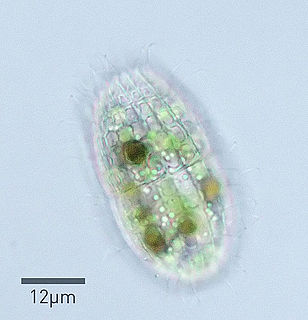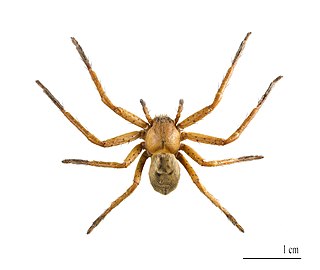
Huntsman spiders, members of the family Sparassidae, are known by this name because of their speed and mode of hunting. They are also called giant crab spiders because of their size and appearance. Larger species sometimes are referred to as wood spiders, because of their preference for woody places. In southern Africa the genus Palystes are known as rain spiders or lizard-eating spiders. Commonly they are confused with baboon spiders from the Mygalomorphae infraorder, which are not closely related.
Benoy Krishna Tikader (1928-1994) was an Indian arachnologist and zoologist and a leading expert on Indian spiders in his time. He worked in the Zoological Survey of India and published the Handbook of Indian Spiders in 1987. The book describes 40 families and 1066 species of India, many of which were described by Tikader himself. The handbook is a guide to all arachnids including scorpions, and not just spiders. He was also a popular scientific author in his native language of Bengali, and was the author of Banglar Makorsha for the layman.

Mimetes hirtus is an upright, evergreen shrub of 1½–2 m high from the family Proteaceae. It has upright, overlapping, (broadly) lance-shaped leaves, without teeth, but with one thickened pointy tip. It has cylindric inflorescences topped by a pine apple-like tuft of pinkish-brownish, smaller and more or less horizontal leaves. The flowerheads are tightly enclosed by yellow, red-tipped bracts, only the 9–14 long red styles and the whitish silky tips of the perianth sticking out. It is primarily pollinated by the Cape sugarbird. It is an endemic species of the southwest of the Western Cape province of South Africa, and grows in wet zones at the base of south facing mountain slopes. Flower heads may be found from May to November, but peaks in July and August. The species has several vernacular names of which marsh pagoda seems to be used most.

Coleps is a genus of ciliates in the class Prostomatea with barrel-shaped bodies surrounded by regularly arranged plates composed of calcium carbonate.
Olios lepidus is a species of huntsman spider, found in Brazil.

Olios argelasius is a species of huntsman spider found in the Mediterranean Basin. It was first described by Charles Athanase Walckenaer in 1805.

Olios is the largest genus of huntsman spiders, containing 250 species. They are found throughout the world, with most species occurring in hot countries. The genus was first described by Charles Athanase Walckenaer in 1837.
Olios suavis is a spider species found in Cyprus, Israel and Egypt.
Olios ceylonicus is a species of spider of the genus Olios. It is endemic to Sri Lanka. It is part of the huntsman spider family Sparassidae.
Olios greeni, is a species of spider of the genus Olios. It is endemic to Sri Lanka.

Olios lamarcki, is a species of spider of the genus Olios. It is found in Madagascar to Sri Lanka and India. The subspecies O. lamarcki taprobanicus is endemic to Sri Lanka.

Olios milleti, is a species of spider of the genus Olios. It is native to India and Sri Lanka. According to SpiderID, Olios milleti is most often sighted outdoors during the month of February.
Olios senilis, is a species of spider of the genus Olios. It is native to India and Sri Lanka.

Curicaberis is a genus of huntsman spiders that was first described by C. A. Rheims in 2015.

Heriaeus is a genus of crab spiders that was first described by Eugène Louis Simon in 1875.

Olios giganteus is a species of giant crab spider in the family Sparassidae. It is found in the United States and Mexico.

Heriaeus hirtus is a species of crab spiders belonging to the family Thomisidae.










